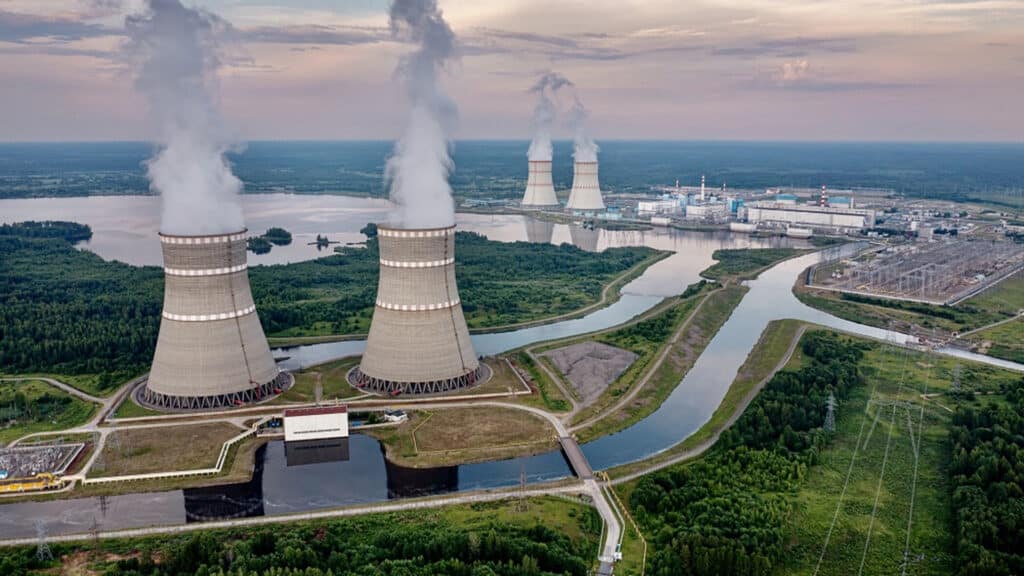Why Russia’s Rosatom is the undisputed pick for Kazakhstan’s first nuclear plant

One in every three new nuclear reactors worldwide is currently being built or designed by Rosatom, Russia’s national nuclear corporation. As the undisputed leader in global nuclear power plant (NPP) construction, Rosatom plays a key role in Moscow’s broader geopolitical strategy. Where Russia once sought to entangle its neighbors with gas pipelines, the Kremlin is now using Rosatom to extend similar influence, according to independent energy analyst Yana Fortuna in a recent article for Novaya Gazeta Europe.
Kremlin’s soft power
Following Russia’s invasion of Ukraine, Rosatom expanded its international footprint, particularly in Africa, South America and Asia. It has become a form of «soft power» for the Kremlin.
Citing the company’s latest report, Fortuna notes that Rosatom is involved in the construction of 33 power units across 10 countries. Active projects include nuclear power plants in Turkey, Bangladesh, Egypt, China, India and Iran.
In some countries, Rosatom is merely a bidder. In Kazakhstan, for example, a developer is currently being selected for the country’s first NPP. In Kyrgyzstan, agreements have already been signed and negotiations are underway regarding contract terms.
According to the Norwegian Institute of International Affairs (NUPI), Rosatom’s foreign project portfolio spans at least 54 countries. The countries most dependent on Rosatom are former Soviet republics and Eastern European nations that still operate Soviet-designed reactors, including Belarus, Armenia, Uzbekistan, Hungary, Slovakia and Bulgaria.
Armenia is particularly reliant: its sole nuclear power plant, recently refurbished by Rosatom, generates up to 27% of the country’s electricity. If all planned reactors in Armenia are completed by 2040, Rosatom could fully meet, and even exceed, the country’s electricity needs. In Hungary, Rosatom-linked nuclear plants supply roughly 42% of the nation’s electricity. In Bulgaria, the figure is 37%; in Belarus, 34%; and in Uzbekistan, 20%.
The analyst points to a clear reason for this deep dependence: when Russia builds an NPP abroad, it ties the host country to Russian technology, services and fuel for decades. Constructing nuclear power units and the necessary infrastructure typically takes between seven and 15 years and is overseen entirely by the developer’s experts. They can also train local personnel, launch the plant and provide support throughout the facility’s entire lifecycle — often 50 to 60 years, with the potential to extend up to 80. Throughout that time, the supplier country provides fuel, spare parts, and technical assistance and eventually oversees the safe decommissioning of the reactor, which itself can take decades.
Fortuna highlights that this dependence often extends beyond reactor design or fuel supply. Turkey’s Akkuyu NPP, for instance, is being built under a build-own-operate (BOO) model. Under this arrangement, Rosatom assumes all construction and financial risks but retains ownership and operational control of the plant. The company will sell the electricity it generates to Turkey. In practical terms, the analyst notes, Ankara is not a partner in the project but merely the host of a Russian-owned nuclear facility.
So far, Rosatom stands alone
Kazakhstan is currently evaluating four potential technology providers for its NPP project: CNNC (China, HPR-1000 reactor), Rosatom (VVER-1200, VVER-1000 reactors), KHNP (South Korea, APR-1400 reactor) and EDF (France, EPR1200 reactor). This followed a nationwide referendum on the plant’s construction on Oct. 6, 2024. The proposal passed with 71.12% of voters in favor.
Rosatom is regarded as one of the leading contenders to win the bid for constructing Kazakhstan’s first NPP. Initially, Kazakhstan’s Ministry of Energy estimated the cost of building a 2.4-gigawatt (GW) plant, consisting of two 1.2 GW units, at $10 billion, a figure consistent with the cost of similar NPPs built by Rosatom. However, Kazakhstan later adjusted the estimated cost to $11 billion, then $12 billion and eventually $15 billion. Roman Sklyar, Kazakhstan’s first deputy prime minister, acknowledged that the project’s cost could increase by up to 150% compared to the original budget.
In late January 2025, Rosatom CEO Alexey Likhachev said that the two countries were «heading toward joint resolutions» concerning the construction of an NPP in Kazakhstan. In April, Kazakh Foreign Minister Murat Nurtley stated that the country counts on Russia for its first NPP project.
Fortuna says Rosatom faces virtually no serious competition today. Countries looking to build NPPs have very few contractor options.
«There are very few players in the [NPP construction] market: South Korea, China, the U.S., France and Japan. Rosatom is head and shoulders above them all,» said Kacper Szulecki, a professor at the NUPI, in an interview with Novaya Gazeta Europe.
The analyst also highlighted several key factors behind Rosatom’s dominance. Notably, American nuclear giant Westinghouse Electric has not built a reactor abroad in nearly two decades. France’s Électricité de France (EDF), the state-run nuclear operator, has struggled with massive delays and cost overruns on its projects across Europe. Overall, the 21st century has seen a marked decline in the capacity and competitiveness of nuclear firms in Europe and the U.S.
Russia, by contrast, has preserved and strengthened its nuclear sector.
«Russia continued building new units to replace aging ones and supported the industry,» said Dmitry Gorchakov, an expert with the Bellona Environmental Foundation. «The state invested heavily, treating nuclear energy as a strategic priority.»
That enduring state support has allowed Rosatom to maintain its domestic expertise and lead the global export market. Unlike private-sector competitors, Rosatom often delivers projects on time and within budget. It can handle large-scale developments, including the simultaneous construction of multiple power units. While Chinese and South Korean firms are emerging competitors, China is still in the early stages of exporting nuclear technology, and South Korea offers fewer completed projects and higher costs.
«If a country wants to implement a nuclear project, it must have very strong reasons not to work with Russia,» Gorchakov said, summarizing Rosatom’s competitive edge.
Kazakhstan’s first NPP, with a planned capacity of 2.4 GW, is slated to be built in the village of Ulken in the Zhambyl district of the Almaty region, near Lake Balkhash. According to President Kassym-Jomart Tokayev, the project may be carried out by an international consortium. In late January, then-Energy Minister Almassadam Satkaliyev — now head of Kazakhstan’s newly established Nuclear Energy Agency — said that at least three nuclear power plants should form the foundation of the country’s future nuclear cluster.

